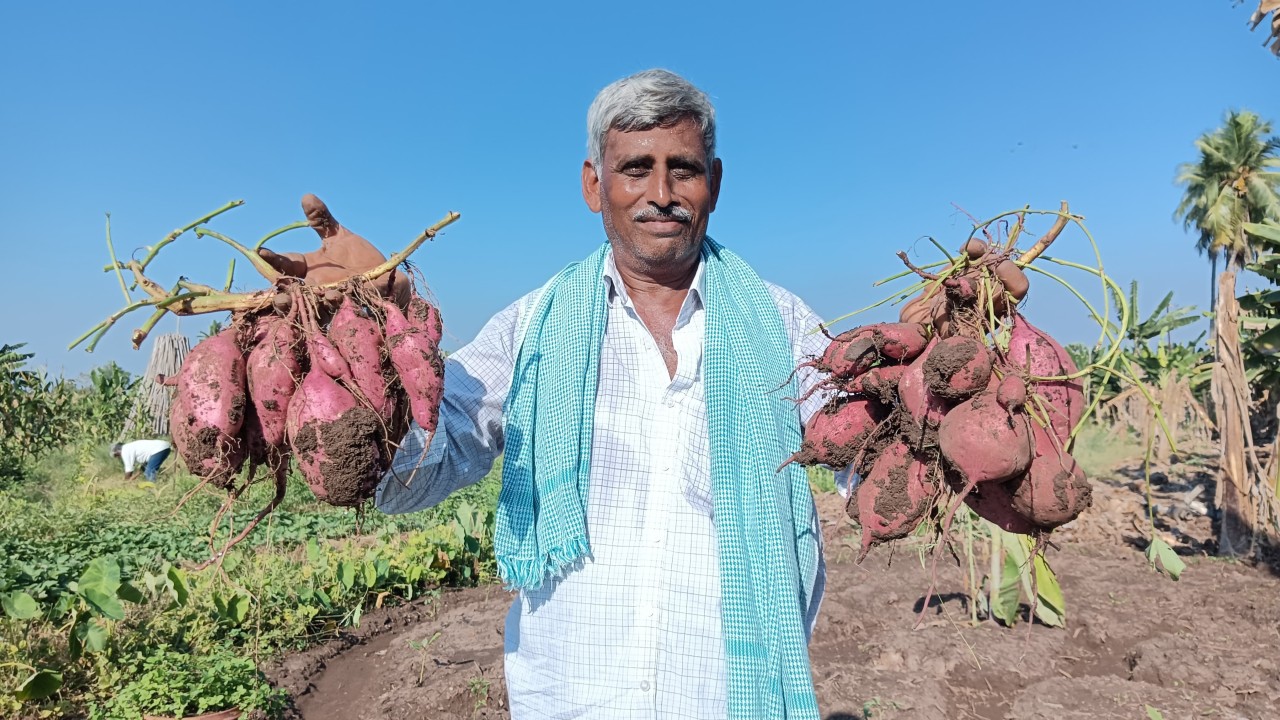Alumni Voices
IIMB Alumnus & Dean Prof. Sourav Mukherji Champions Student Well-Being on ‘Get Kids To Play’ Podcast
In a recent episode of the Get Kids To Play podcast, Prof. Sourav Mukherji — IIMB alumnus, Dean (Faculty), and Dean, Alumni Relations & Development at IIM Bangalore — joined hosts Dr. Vijay Krishnamurthy and Saumil Majmudar to discuss the role of physical activity in education and well-being.
A long-distance runner and coach, Prof. Mukherji brings the perspective of both an academic leader and a practitioner. Drawing from his experiences in corporate leadership, non-profit governance, and endurance sports, he reflected on how running deepened his understanding of the interconnections between fitness, nutrition, and sleep.
He emphasized that “to be fit, one does not necessarily need to be skilled in a sport.” Instead, he urged every student to participate in at least one physical activity to manage stress, improve focus, and cultivate lifelong habits of health and resilience — values central to IIMB’s ethos.

Ode to an Alma Mater – Bibhuti Dash, PGP 1984
It is inevitable that human civilisation will self-destruct at some point in time. Then the cycle will start all over again. Hunting-gathering, rudimentary tools, stone age, bronze age, iron age, nuclear age and so on. At a future date, when they excavate, they might find a beautiful structure at present-day Bannerghatta in Bengaluru. There would be inexplicable stone structures spanning an area of present-day 54,000 sqm. It might look like this:


They will use carbon dating or whatever methods and date the constructions to present day 1973-1983. Gradually, with the help of other artifacts and some imagination, they’ll recreate some of the structures to have looked like:

They will be surprised at some of the similarities of the structures to two other structures found quite far away. They wouldn’t know that these latter were called Fatehpur Sikri and Madurai temple today. They will be amazed at the structures’ spatial synthesis and energy efficiency with passive cooling strategies. The facilitation of natural light and ventilation will take their breath away. Every so often, the lines of the architecture will baffle them because they will see sudden changes of scale and occasional breakings of corridors; however, the structure would make sense when taken as a whole.
What they wouldn’t know is that the whole complex was designed to foster an environment of learning and interaction. If they reconstruct the buildings with lush surroundings they will find the whole complex leaning on a sequence of spatial experiences. The overall sequence of movement – from the lush, open campus to the semi-open corridors and eventually to the more enclosed and protected spaces would generate multiple threshold conditions. These unique locations in the plan would allow the functional spaces to interact and assimilate more freely with the overall theme, creating fluid and easy connections between the spaces for movement and the spaces for work.
They wouldn’t know the genius of the architect, Balkrishna Vithaldas Doshi for whom, “Architecture was an extension of the body, and it was where the mind dwelt.” Like all Doshi’s creation, this structure, with its harmonious blend of traditional Indian and modern architectural elements would be seen but the underlying philosophy would escape those in the future. They may not know that the design ethos was to create a space that transcended the physical boundaries of buildings, encouraging openness and fluidity, seamlessly integrating indoor and outdoor spaces, facilitating a dialogue between nature and built form. The structure would be representative of architectural norms at a time when the country was on the cusp of embracing modernity.
They may well surmise a few things, e.g., that it was a place of learning, but they wouldn’t know how, by creating an atmosphere where one didn’t see divides and doors, it promoted a sense of community among the students and faculty. How the courtyards, corridors, and fenestrations were meticulously designed to facilitate natural light and ventilation, creating a conducive atmosphere for education and contemplation. How the inclusive spaces encouraged creativity and interaction. How the campus blended historical inspirations and modern functionality, making it a unique example of how architecture could bridge the past and the present. Or how over a career spanning six decades, Doshi created such a profound impact on the architectural fraternity and society at large that he was awarded the prestigious Pritzker Architecture Prize (frequently referred to as the Nobel prize of architecture) in 2018, becoming the first Indian to receive this honour.
Above all, they wouldn’t know how the campus and the buildings housed a beacon of academic excellence called IIMB which nourished such a large number of world leaders and how enormously the architecture contributed to that process. They also wouldn’t know that although the institute was already 10 years old then, the author’s batch was the first one in that campus.
Follow Bibhuti Dash’s blog here to stay updated on his latest posts.
RySS – Sowing Change: Empowering Communities to Lead the Regenerative (Natural) Farming Movement – Alex Manappurathu, EGMP 2009

Being a learner of Agriculture, Sustainability, and Change management, I grabbed the opportunity to visit Ryss (Rythu Sadhikara Samstha)during the first week of April in Guntur, Andhra Pradesh along with another 16 members from Kerala. Many of them were very experienced natural farmers.It was an opportunity to see how Ryss transformed the farming scene in Andhra over the last decade, moving 10 lakh farmers away from chemical farming into the natural farming fold. Ryss was started about 20 years back with Mr. Vijay Kumar IAS leading from the front.
Through this article, I am attempting to jot down what we saw on the ground as impact to farmers, the organization structure of Ryss and how they managed to systematically convince more farmers and ensure there are no dropouts.
To give an overview, Natural farming aka regenerative farming is based on the principle that nature provides mechanisms in the form of food webs to supply nutrients to plants without humans needing to put in external manure(Soil chemistry ). Natural farming is based on soil biology, the microbes make nutrients naturally available in the environment bioavailable to the plants(without adding manure), provided its mechanisms are not disturbed. Natural farming is different from organic farming too. Key practices are no/minimal disturbance to soil in form of chemicals, green cover/mulching to protect and make microbes thrive(and maximize photosynthesis), intercropping as opposed to monocropping with the awareness that diversity of plants help each other at the root layer rhizosphere, integration of animal/insect/bird systems into farm land and utilizing the food web.
Regenerative farming has the following advantages
1.The input costs being low, it’s profitable to farmers while maintaining soil fertility. 2. Consumers get nutritious and healthy produce without needing to pay exorbitant prices. 3. Water requirement is significantly reduced. 4. Helps in carbon sequestration and reduces global warming.
Ryss Org structure
At the ground level CRPs represent the organization. CRPs(Community Resource Personnel) are paid an honorarium. An iCRP is a natural farming practitioner with a minimum of 3 years experience in natural farming(if they stop practicing it, they are not continued as iCRP). Currently there are around 8000 CRPs. One CRP supports around 150 farmers.
Implementation heavily leverages existing women Self Help Groups structure. The progression path for a CRP is: local village → other GPs → other blocks → unit-incharge → Master Trainer.
The team gets a chance to get promoted to different levels and grow fairly quickly. About 140 CRPs have been deputed to other states and countries too(Srilanka, Indonesia etc). The organisation has percolated the idea that “farmers need to be treated as God” to the grassroots level.
Integrating SHG into the fold is one of the reasons for quicker diffusion in the villages. For example, one SHG team (of 10 members) had one natural farmer in Year 1, became 2 in Year 2, and 5 in Year 3.
Integrating the agriculture department(a key stakeholder) who has learnt chemical farming and needed to unlearn and relearn is key to the success of this change movement. Ryss has been able to get senior agricultural officers on deputation who then participate enthusiastically in scientific studies involving natural farming.

Processes and policies
The policies and processes are designed around making the system sustainable and to avoid myopic solutions. For example, decisions were made to avoid giving subsidies for farmers moving to natural farming which would have been the normal approach. The reasoning was that, in such a case once subsidy is removed, farmers who weren’t really convinced and moved to natural farming will fall back to chemical farming. Farmers are also categorized into levels of natural farming coverage. An S2S(Seed to Seed) farmer is someone whose entire cycle of sowing to harvesting is using natural farming principles. In the initial phase of transition, a farmer generally moves in stages before becoming S2S.
Requiring the frontline team on the field(CRPs) to be practicing natural farming helps that they are themselves convinced and can convince others. Being a farmer themselves, CRPs recommendations carry the farmer to farmer credibility.
A Food Basket scheme is now being piloted(a concept in change management in action- before going the whole hog, iron out the issues on a smaller scale). The purpose essentially is to ensure that the villagers are provided nutritious food from the local community.
APCNF Model
Initially the methods were from the Subhash Palekkar ZBNF(Zero Budget Natural Farming) Model but with independent research and farmers observations, some variations are practiced which is now termed as APCNF.
The 9 cornerstones of APCNF are:
- Soil to be covered with plants all 365 days
- Diversified plants 15-20 kinds including trees
- Keep soil covered with plant residues whenever living plants are not there
- Minimize tillage
- Prefer indigenous seeds/Farmers own seeds
- Integrate animals into farming
- Bio stimulants as catalysts to trigger soil biology
- Pest management through better agronomical practices and botanical pesticides
- No synthetic fertilizers, pesticides, herbicides, weedicides
Farm Visits
We had the opportunity to visit farmers growing different types of crops and also in different scales commercially. For the “Poorest of Poor” (POP) who normally farm in leased lands, there’s a model called ATM (Any Time Money) which provides daily cash flows through different vegetable cultivation.The POPs are encouraged to have a home garden in addition to ATM model plots.
The presentations by each farmer included the commercial ROI per acre in each of the plots in addition to their farming practices.
We could also see innovation and experiments and enthusiasm in farmers. One farmer, Mr Chakrapani, for example, does not bother to pluck coconuts, arecanut or pepper, instead he lets it fall on the ground to pick up. He uses a 15,000 liter tank for Jeevaamrutham mixed with help of 0.75hp dirt pump. He pours about 4 liters per coconut once a month. He also uses panchagavya, the cost of which he said is low because he generates all the inputs required for it. He converts coconuts to coconut oil. He said in oil palm his output is around 20 tons per acre compared to about 8 or 10 in chemical farming fields.
A 5 layer farm we visited had 45 different types of plants. They distribute dung for neighbours who don’t own cows. An ATM Model farmer earns about Rs 20,000/- per month from a 20 cents plot.
Another farmer Srinivas Reddy just uses concepts like live mulching, no tilling and PMDS (Pre monsoon Dry Sowing) to continue to keep soil microbes healthy and soil extremely porous. He has banana and turmeric as main crops in about 3 acres and has 365 days green cover. Before planting trees, he puts cover crops in about a meter’s radius with the Humming bird shrubs(Agastya Cheera) in the circumference of that circle, and plants the tree in the middle after about 70 days. He started his natural farming journey in 2016. He has improved his soil to a truly regenerative model that nearly replicates the forest soil ecosystem. So he no longer needs to apply even jeevamrutham anymore.
In another paddy field visit, since intercropping is difficult, they have made a broad bund and cultivated vegetables, pulses, bananas etc. The water level in the paddy field is also kept low- just above root level. This is supposed to reduce pest attacks.
An SHG now intercrops paddy with maize, then PMDS(previously 18 varieties of seeds, now moving to 30). Net profit during chemical farming was Rs 30,000 per acre, is now around Rs 60,000 per year, after 3 years of moving from chemical farming. They said their water usage has also significantly reduced, soil is healthy and individuals are also healthy, and the cost of cultivation has come down.
A banana farmer planted marigolds and banana together and was able to generate 1 lakh from marigold per harvest in 90 days. He has about 1000 banana trees planted. He pays Rs 60,000 per year per acre as leasing charges. He has saved about one lakh in costs of fertilizers.
Another banana farmer had intercrops like turmeric, chilli, gourds, brinjal, papaya, castor, sugar cane and carrot.
Local employment opportunities have increased with many youth turning local “Agri”preneurs. A youth farmer with 10th standard education who used to get 20 bags of paddy now gets about 40 bags in natural farming in leased land along with other crops. He converts paddy to rice. He now earns about 5 Lakhs per year.
A guava farmer’s view was that in chemical farming, soil got degraded and caused health problems. In three years soil health came back to life and improved shelf life and taste of fruits with natural farming. Interestingly, his neighbor, a chemical farmer, comes to his farm and eats his farm guava instead of his own! When asked why his neighbour is yet to transition, the answer was, “A farmer will wait and watch before he moves”.
In all farm visits, the enthusiasm and passion was clearly visible. We felt these visits might even motivate neighbour farmers too to understand natural farming and shift.
Technical details of natural farming implementation
Rysss has invested heavily into linking scientific proofs to what was observed in practice.
Tying up with international research institutes and universities, new methods of understanding the science behind natural farming are being explored. The scientists showed us with a Briggs refractometer that the photosynthesis efficiency in a natural farming site was significantly higher compared to close-by chemical farms. In paddy, if the reading is less than 3, it indicates Boron deficiency, greater than 10 indicates highly resistant to pests. Technology like drones were employed for spraying jeevamrutham in paddy fields. There was a discussion on the usefulness of soil testing in the conventional way of chemical composition of the soil. If the health of soil microbes can be tested in any other way like microbial respiration, it might be a better indicator of soil health.
Farmers are encouraged to do their own experiments. 33 farmer scientists are undergoing a 6 semester natural farming course. A 4 year degree course in Natural farming is planned to cover about 10,000 students.
The NPM shops(Non Pesticides Management) shops are established which helps farmers who have small land holdings and do not own cows. NPMs sell items like beejamrutham, jeevamrutham, ghana jeevamrutham, Agnassthram, pheromone traps etc.
Conclusion
Being in nascent stages, natural farming is probably explored by different teams without knowing about each other’s work. It will be interesting to know what research is happening in India on natural farming, in IITs(technology side), IIMs (Social impact side/ change management) or any other institutions. Request you to please post in comments or DM(Alex@YushuConsulting.com)


